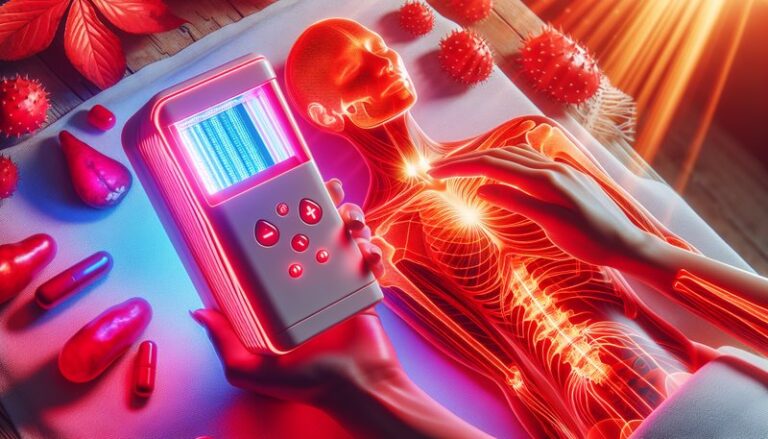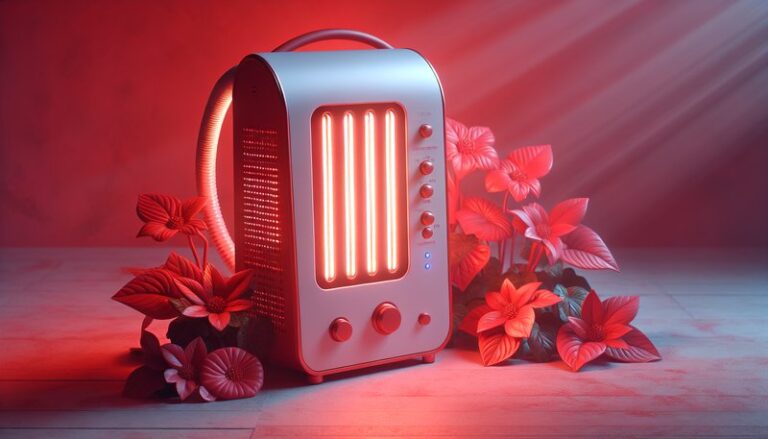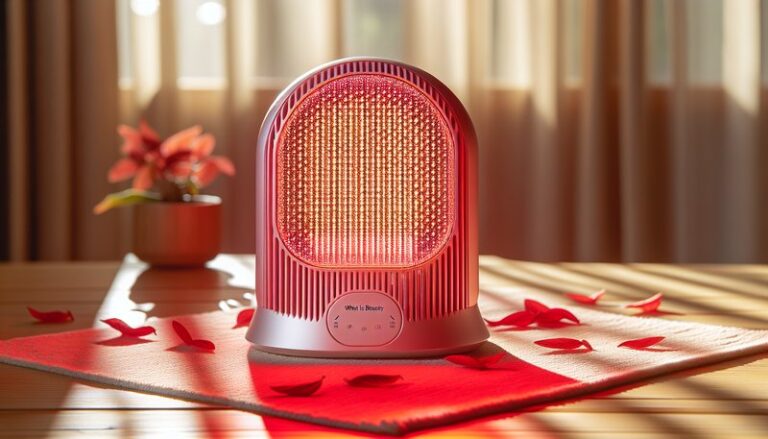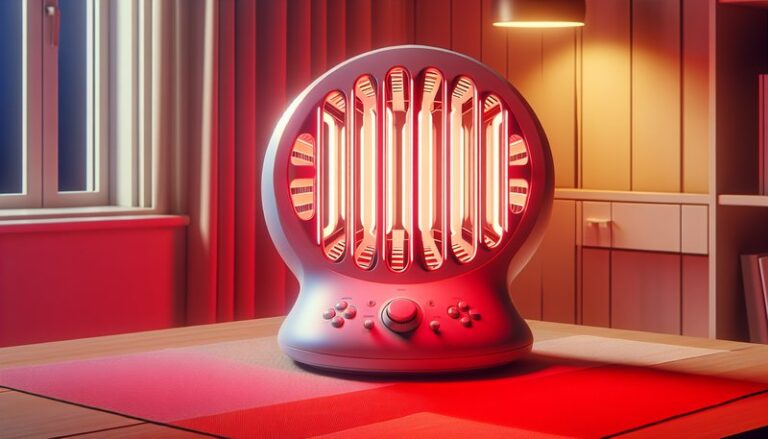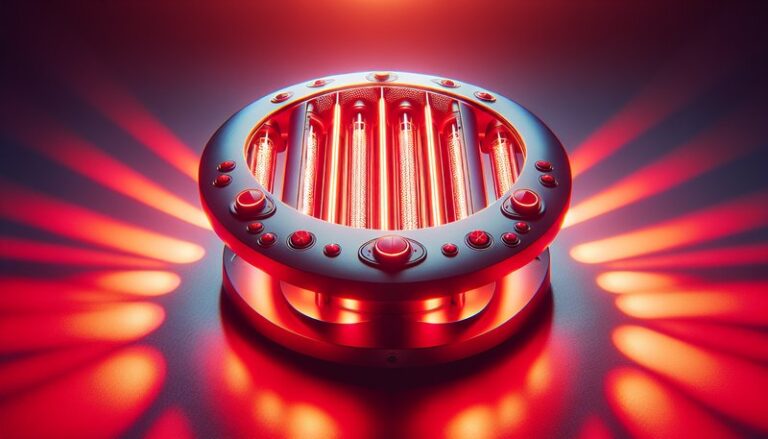What Does Red Light Therapy Do For The Body?
What Does Red Light Therapy Do For The Body?
Are you curious about how red light therapy can enhance your health and wellness?
In this article, we will delve into the science behind red light therapy, its benefits, and considerations for integrating it into your wellness routine. We’ll also explore alternatives to red light therapy, ensuring that you have all the necessary information at your fingertips.
Key Takeaways
- Red light therapy uses specific wavelengths of light to stimulate cellular function and promote healing.
- It offers a range of benefits, including improved skin health, reduced inflammation, and enhanced recovery from exercise.
- While red light therapy is generally safe, it’s important to consider specific factors before starting treatment.
What is Red Light Therapy?
Red light therapy (RLT) is a non-invasive treatment that uses low-level wavelengths of red and near-infrared light to penetrate the skin and influence cellular processes. RLT is often utilized in clinical settings and increasingly in home-use devices, making it accessible for various applications.
This therapy works by stimulating the mitochondria in cells, enhancing ATP production, which is crucial for cellular energy and function. By boosting cellular metabolism, red light therapy can promote healing and optimize physiological processes.
How Does Red Light Therapy Work?
Red light therapy typically employs wavelengths ranging from 600 to 650 nanometers (nm) for red light and 800 to 850 nm for near-infrared light. When these wavelengths are absorbed by the skin, they can penetrate to different depths, depending on the specific wavelength, thus providing various therapeutic effects.
What are the Benefits of Red Light Therapy?
Red light therapy boasts a multitude of advantages, many of which are backed by scientific research. Below are some key benefits of this innovative therapy.
Get the complete picture “Proximity to Red Light Therapy?”
Improved Skin Health
Red light therapy can enhance collagen production, which is essential for skin elasticity and overall appearance. Users often report reductions in fine lines, wrinkles, and skin blemishes, leading to a clearer and more youthful complexion.
Reduced Inflammation
RLT has anti-inflammatory properties that can alleviate conditions such as arthritis and chronic pain. By decreasing inflammation, it can help reduce discomfort and improve quality of life for many individuals suffering from these ailments.
Enhanced Muscle Recovery
Athletes frequently use red light therapy to speed up recovery after workouts or injuries. RLT can reduce delayed onset muscle soreness (DOMS) and improve muscle repair, allowing for better performance and quicker turnaround times between training sessions.
Pain Relief and Management
Many people turn to red light therapy for its ability to help manage pain conditions like fibromyalgia or neuropathy. RLT can provide relief by increasing blood flow to painful areas, thus reducing discomfort.
Boosted Mood and Energy Levels
Exposure to red light may also affect serotonin levels and improve mood, leading to feelings of well-being. This can be particularly beneficial during winter months when natural sunlight is limited and Seasonal Affective Disorder (SAD) may affect mood.
Is it Possible to Use Red Light Therapy at Home?
Absolutely! Many devices are available for home use, such as LED light panels, handheld devices, and face masks specifically designed for red light therapy. However, it’s crucial to understand how to use these devices effectively to reap their benefits.
What are the Advantages of Home Use?
Using red light therapy at home offers vast convenience and accessibility. It allows individuals to integrate this therapy into their daily routines without the need for frequent visits to a clinic.
What are the Disadvantages of Home Use?
One potential downside is that home devices may vary in effectiveness compared to professional medical-grade systems. Some cheaper devices may not emit the appropriate wavelengths needed for therapeutic benefits; hence, investing in a quality device is vital.
What are the Things to Consider Before Trying Red Light Therapy?
Before starting red light therapy, consider the following factors to ensure a safe and effective experience.
Consult a Healthcare Provider
If you have underlying health conditions or are pregnant, it’s advisable to talk to a healthcare professional before beginning treatment to understand any potential risks or contraindications.
Device Quality and Specifications
Researching the device’s specifications such as wavelength, intensity, and treatment area is important. Look for devices that have been clinically tested and peer-reviewed to ensure their effectiveness.
Consistency of Use
Like many therapies, consistency is key. Establishing a regular schedule for red light sessions maximizes benefits, typically ranging from 10 to 30 minutes, several times a week.
What are the Alternatives to Red Light Therapy?
For those seeking different therapeutic methods, there are alternatives to red light therapy that might be worth exploring.
Blue Light Therapy
Often used for acne treatment, blue light therapy targets the bacteria that cause acne while reducing inflammation. This alternative is particularly popular among teenagers and young adults dealing with this skin condition.
Ultraviolet (UV) Light Therapy
UV light therapy is primarily used for skin conditions such as psoriasis and eczema, promoting skin healing. However, it should be approached cautiously due to potential skin damage from UV exposure.
Cryotherapy
This alternative treatment uses extreme cold to reduce inflammation and pain. It’s often used by athletes to recover from intense training sessions and injuries, similar to the benefits derived from red light therapy.
Conclusion: Is it Recommended to Try Red Light Therapy?
Overall, red light therapy presents various benefits for health and wellness, ranging from improved skin conditions to enhanced recovery. As with any therapy, it’s essential to consider individual circumstances and preferences before beginning treatment. Consulting a healthcare provider and choosing a quality device can ensure a positive experience.
Frequently Asked Questions
How often should I use red light therapy?
It is generally recommended to use red light therapy several times a week, with many finding success using it 3 to 5 times weekly for optimal results.
Are there any side effects?
Red light therapy is considered safe, but some individuals may experience mild redness or a temporary warming sensation in the treated area. It’s important to adhere to recommended treatment times to minimize any adverse effects.
Learn more with our post on Does Red Light Therapy Tighten Skin?
Can red light therapy help with weight loss?
While scientific evidence is limited, some studies suggest that red light therapy may support metabolism and fat loss. However, it should be noted that it is not a substitute for a balanced diet and exercise.
How do I pick a good red light therapy device?
Look for devices that provide specific wavelengths between 600-850 nm, have good reviews or clinical backing, and fit your intended usage, whether for skin, pain relief, or overall wellness.
Is red light therapy suitable for all skin types?
Yes, red light therapy is generally safe for all skin types. However, individuals with specific skin conditions should consult with a healthcare provider to assess suitability.


